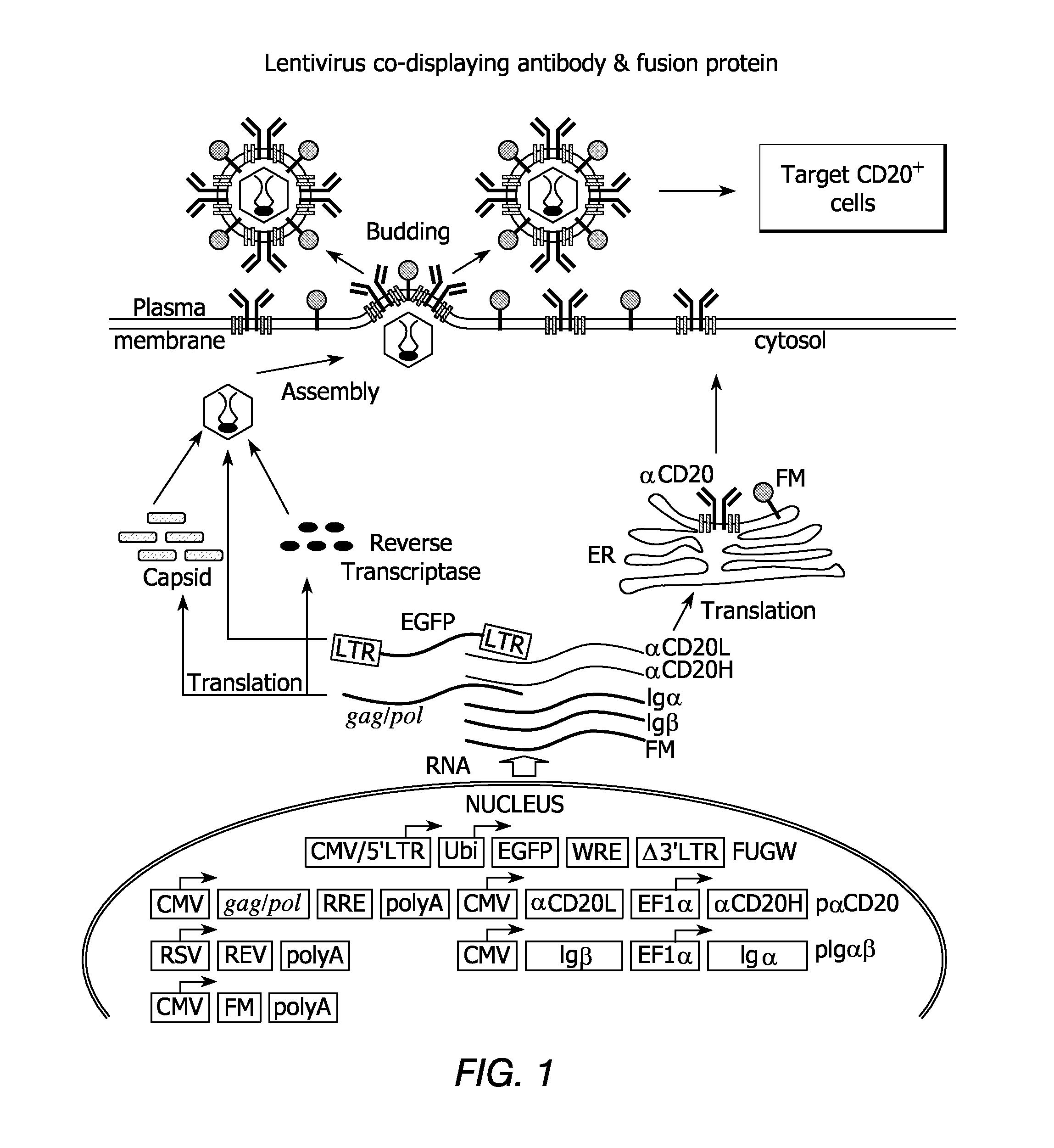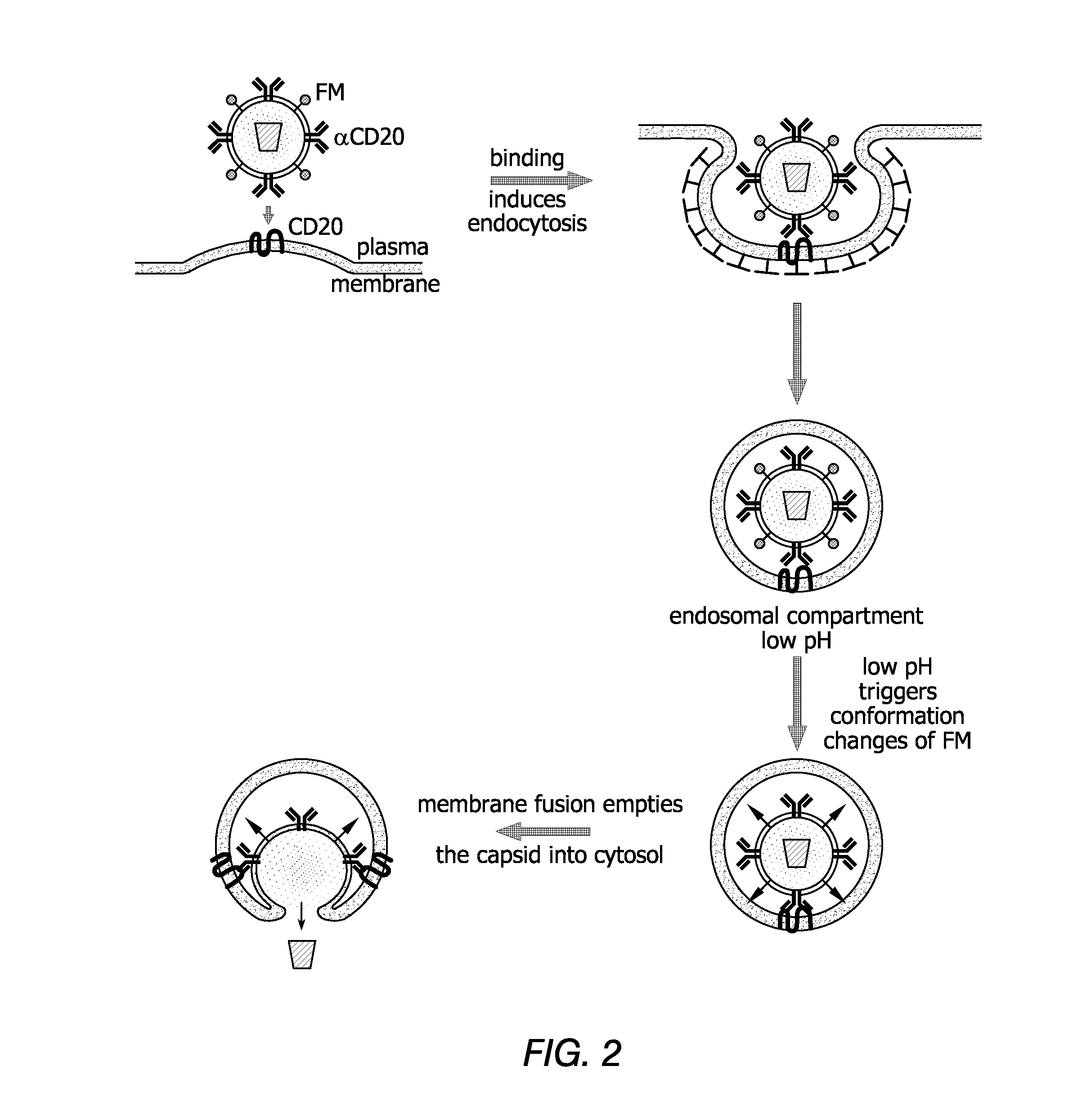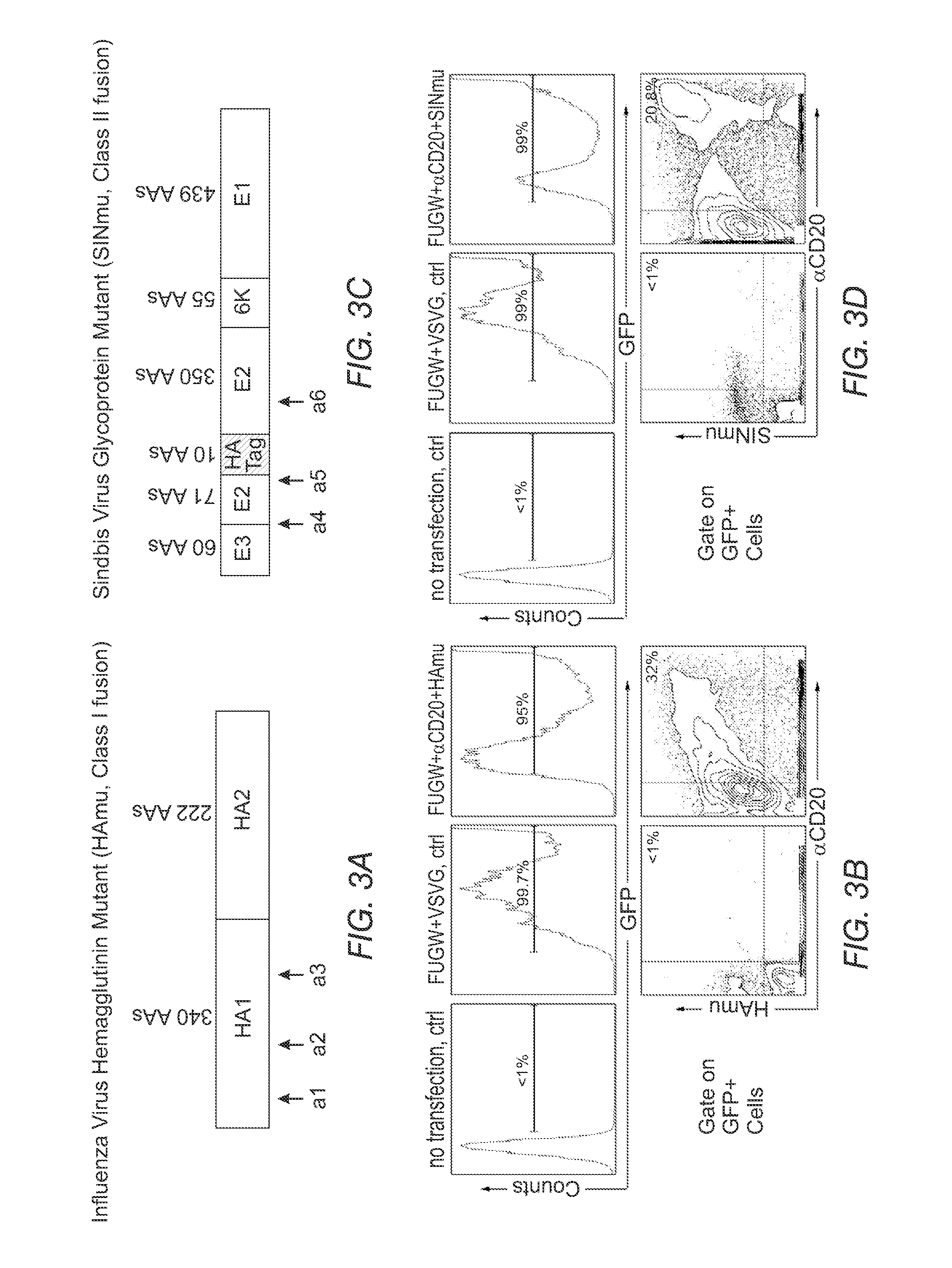Method of targeted gene delivery using viral vectors
a viral vector and gene technology, applied in the field of recombinant viruses, can solve the problems of difficult to reconstitute fusion function, low viral titers, and difficulty in targeting such viruses to particular cell types
- Summary
- Abstract
- Description
- Claims
- Application Information
AI Technical Summary
Benefits of technology
Problems solved by technology
Method used
Image
Examples
example 1
Targeted Cell Transduction Utilizing Retroviral Vectors FUGW / αCD20+HAmu and FUGW / αCD20+SINmu
[0257]One antibody chosen to serve as the basis of an affinity molecule, according to some embodiments of the invention, is the anti-CD20 antibody (αCD20), a version of which is currently being used in the treatment of B-cell lymphomas. Physiologically, CD20 is expressed at the pre-B-cell stage of development and throughout B-cell maturation; hematopoietic stem cells do not express CD20. When B-cells mature into plasma cells, expression of CD20 is diminished. Thus, CD 20 represents an ideal target for therapy of, for example, B-cell lymphomas and leukemia. A construct that encodes a mouse / human chimeric anti-CD20 antibody with the human membrane-bound IgG constant region (pαCD20) was generated as described above. Genes encoding human Igα and 10, the two associated proteins that are required for surface expression of antibodies, were cloned into a construct designated pIgαβ (FIG. 1).
[0258]The ...
example 2
Transduction of CD20-Expressing Target Cells and 293T Cells Utilizing the Retroviral Vector FUGW / αCD20+HAmu and FUGW / αCD20+SINmu
[0262]Next, the efficacy of a αCD20-bearing virus in transferring genes into cells expressing CD20 in a cell-specific manner was tested. GFP expression was used to measure the transduction efficiency. The supernatants containing virus bearing various surface proteins were incubated with CD20-expressing target cells and 293T cells served as a control. Four days post-transduction, the efficiency of targeting was analyzed by FACS. FIG. 5A (rightmost panel) shows that FUGW / αCD20+HAmu viral particles could specifically transduce 16% of 293T / CD20 cells. Panels to the left show that transduction required the presence on the virions of HAmu, but there was some background transduction with virions lacking αCD20, likely due to residual weak binding of HAmu to its ligand, sialic acid. The titer for FUGW / αCD20+HAmu (fresh viral supernatant, no concentration) was estima...
example 3
Transduction of Primary Human B-Lymphoid Cells Using the Retroviral Vector FUGW / αCD20+SINmu
[0268]Having established the ability of the system to mediate CD20-specific transduction of artificially created cell lines, the specific transduction of primary human B-lymphoid cells, cells that naturally carry the CD20 antigen, was investigated. Fresh, unfractionated human peripheral blood mononuclear cells (PBMCs) were transduced with FUGW / αCD20+SINmu and then stimulated with lipopolysaccharide (LPS) to expand the B cell population. Four days later, the cells were stained for CD19 (a B cell marker), CD20 and GFP expression (FIG. 6A). Over 35% of cells were CD20+ B cells under the described culture condition. The majority of them were GFP+. On the contrary, virtually no GFP+ cells were detected among CD20− non-B cells, confirming that the transduction was strictly dependent on CD20 expression. In another control experiment, fresh PBMCs were transduced with FUGW / αCD20+SINmu followed by stimu...
PUM
| Property | Measurement | Unit |
|---|---|---|
| pH sensitive | aaaaa | aaaaa |
| affinity | aaaaa | aaaaa |
| plasticity | aaaaa | aaaaa |
Abstract
Description
Claims
Application Information
 Login to View More
Login to View More - R&D
- Intellectual Property
- Life Sciences
- Materials
- Tech Scout
- Unparalleled Data Quality
- Higher Quality Content
- 60% Fewer Hallucinations
Browse by: Latest US Patents, China's latest patents, Technical Efficacy Thesaurus, Application Domain, Technology Topic, Popular Technical Reports.
© 2025 PatSnap. All rights reserved.Legal|Privacy policy|Modern Slavery Act Transparency Statement|Sitemap|About US| Contact US: help@patsnap.com



